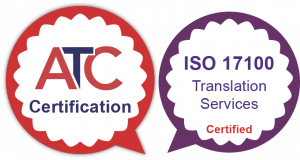Subtitles are used across a huge variety of different media, both on- and offline. So, whether you need subtitle translation for your social media accounts, website, a broadcast video, or to translate an e-learning package, Comms Multilingual can help.
When translating videos, the first question to ask yourself is whether to create multilingual subtitles, voice-overs, or both. A lot of the time it comes down to the expected audience for a given video, and whether this will justify the cost of a multilingual voice-over, but with online platforms such as YouTube, subtitle translation is usually the best first step for the majority of videos.
How Subtitles Are Translated
The process required depends on whether we are asked to work on a video that already comes with a transcript.
If we don’t have access to a transcript, we start by transcribing verbatim the dialogue in the video, so that we have an accurate record of the full dialogue.
With a transcript to hand, we then produce subtitles in English, following standard subtitling best practice (for example line length, on-screen duration, gaps between subtitles).
Many of our clients will go on to use these English subtitles as they are often more professional than the subtitles that are auto-generated by online hosting platforms.
We then proceed to translate the subtitles, again sticking to best practice when translating them.
Once the subtitles have been translated and proofread, we carry out a quality check to ensure that best practice has been respected, before any final post-production processes and delivery to the client.


File Formats for Subtitle Translation
We work with the majority of subtitle and closed caption files, with some of our clients’ most popular formats including:
- SRT (the most common – for YouTube, Wistia, Vimeo, etc.)
- WebVTT
- TTML
- STL
Subtitle translations can either be provided as a standalone file that can be uploaded to a hosting platform and turned on and off as required by the viewer, or the multilingual subtitles can be “burnt in” to the original video for a small additional fee, so they are permanently visible.
Tips to Prepare for Multilingual Subtitling
If you are creating videos or animations from scratch, please bear in mind that other languages can be up to 30% longer than the equivalent English text.
You will therefore need to allow space for text expansion when putting together the original English file. Otherwise, the script may need to be cut down in order to make it fit, thus affecting the meaning. There is a real art to translating for subtitles and we use translators with proven expertise in the art of translating such materials.
Before starting a project, Comms can advise you where the potential pitfalls may be and how we can help you avoid them – please get in touch to find out more.
